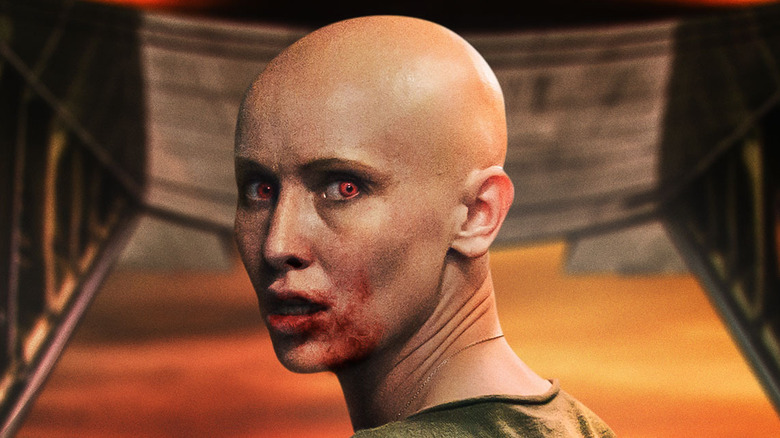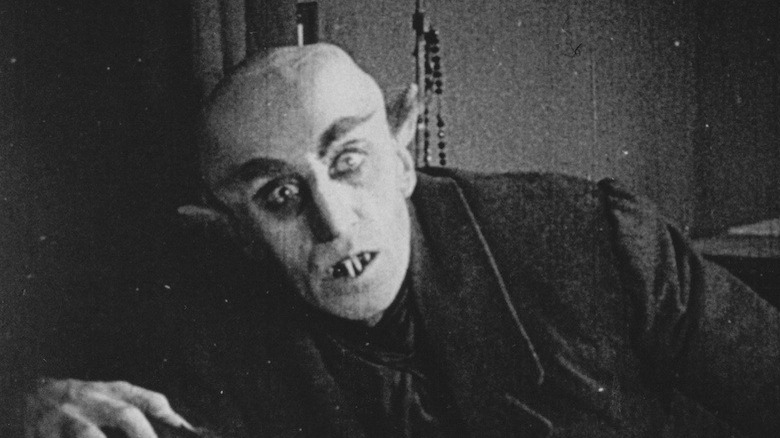You Might've Missed This Iconic Horror Reference In Blood Red Sky
The "Twilight" films' return to Netflix is the talk of the town, but another exciting vampire film also hit the streaming site on July 23: Peter Thorwarth's "Blood Red Sky," an action-packed German horror movie. It centers on Nadja (Peri Baumeister), a German single mom with a mysterious illness who's flying to New York with her young son Elias (Carl Anton Koch) in hopes of getting experimental treatment. However, their journey is thrown into disarray when a group of dangerous terrorists suddenly hijack the flight.
Spoiler alert: When Nadja is shot, it's revealed that she isn't sick at all — she's a vampire. As the situation intensifies, Nadja is forced to lean into her monstrous nature in order to protect Elias and hopefully get them to the United States alive. With an overall positive rating on Rotten Tomatoes, "Blood Red Sky" has been praised for its unique premise and smart plotting. Fans of scary movies may be excited to learn that the film also includes a classic horror reference that many may have missed.
Nadja resembles a classic vampire from "Nosferatu"
As Nadja leans into her vampiric nature and "Blood Red Sky" progresses, she begins looking less and less like she did at the beginning of the film. Rather than resembling an ordinary human being with fangs or even turning slightly demonic-looking like the vampires in "Buffy the Vampire Slayer," she instead balds and develops pointed ears.
Her vampiric appearance is distinctly similar to that of Count Orlok (Max Schreck), the vampiric villain of the classic 1922 German silent horror film "Nosferatu." Debuting nine years before Tod Browning's "Dracula," this unofficial adaptation of Bram Stoker's classic played a huge role in making vampires into iconic (and terrifying) horror creatures.
It's fascinating to see "Blood Red Sky" pay homage to the origins of onscreen vampires in the present day. The film's choice to give Nadja a "Nosferatu"-esque appearance is even more meaningful given that both movies are German in origin.

